
Pancakes are one of those foods that nearly everyone has some sort of memory with. They exist in all forms both sweet and savory, gluten and gluten free varieties for all tastes. Pancakes have been a part of my life for as long as I can remember.
As a child my Dad would use his weekends with me as an excuse to make pancakes. At that point he had a lot of fun with the Aunt Jemima box brand making common simple but incredibly amusing shapes like Mickey Mouse heads. He was the first one that taught me that pancakes didn’t need to be round although I’ll admit mine generally are.
Now when I started dating John it came time to make pancakes and I quickly realized I depended on that box, and other generics similar to it. It turns out that a good pancake recipe is all about ratios and those ratios change with things like elevation and humidity.
Several years ago I set out for the perfect fluffy mix and have had it memorized since. I’ve shared several different pancake recipes here so far but at this point I think it’s worth just laying it out in a way that can be adapted for all situations from gluten free situations to adjusting to using quail eggs instead of chickens (for when those free loading hens all stop laying at once, leaving the tiny quail the only producing birds on the farm at the moment….).
I’ve encountered every bump in the road from humidity caked baking powder to lack of eggs totally and I’ve found there’s a way around all of those issues.
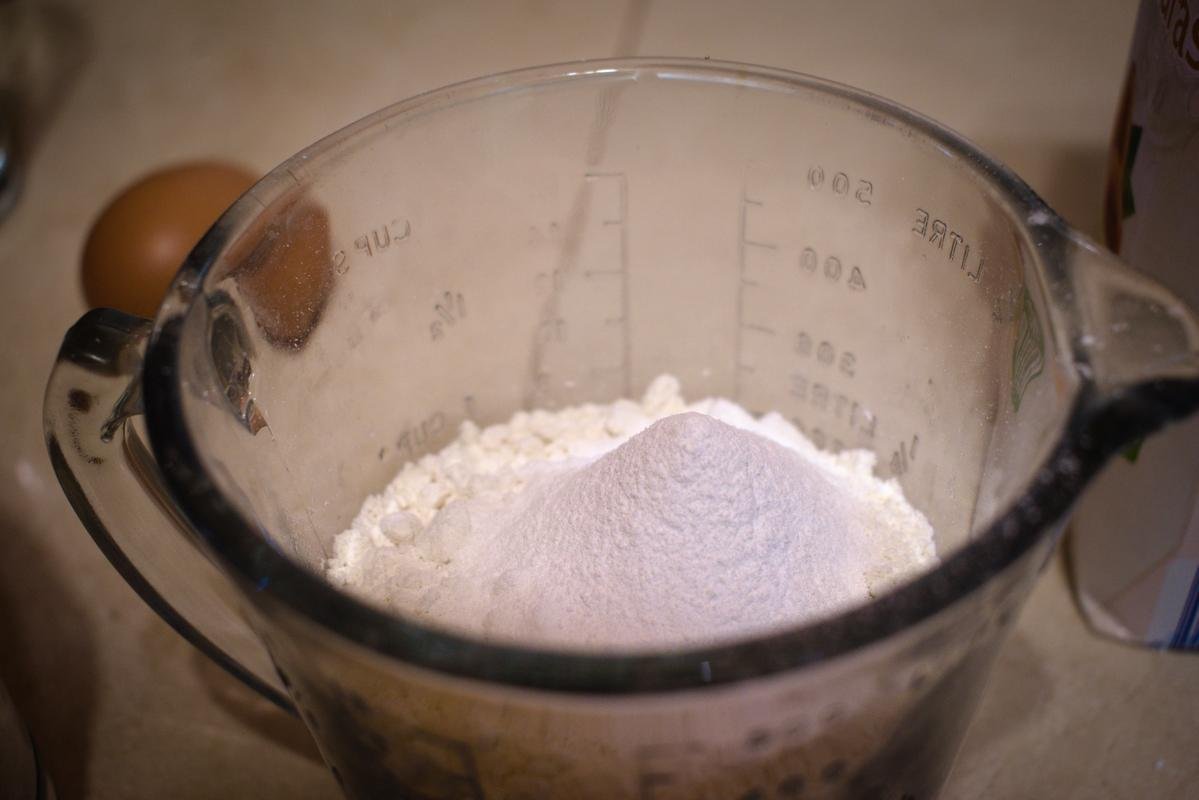
Flour!
Flour is the most important part. Any recipe of mine starts with one cup of whatever flour it may be in proportion to the rest of the base ingredients. My recipe can be scaled up by anyone capable of simple math. Since it’s actually important to not really activate the gluten in pancakes it’s not actually necessary for them but I will say that not every gluten free flour works well in replacement in regards to either flavor or texture. Most all purpose blends will work, but I’ve found some like Bob’s Red Mill end up runnier with the same ratios as others, wheras you’ve often got to use more milk than expected with coconut flour.
A list of my favorite alternative flours:
Almond flour
coconut flour
peanut flour
corn meal
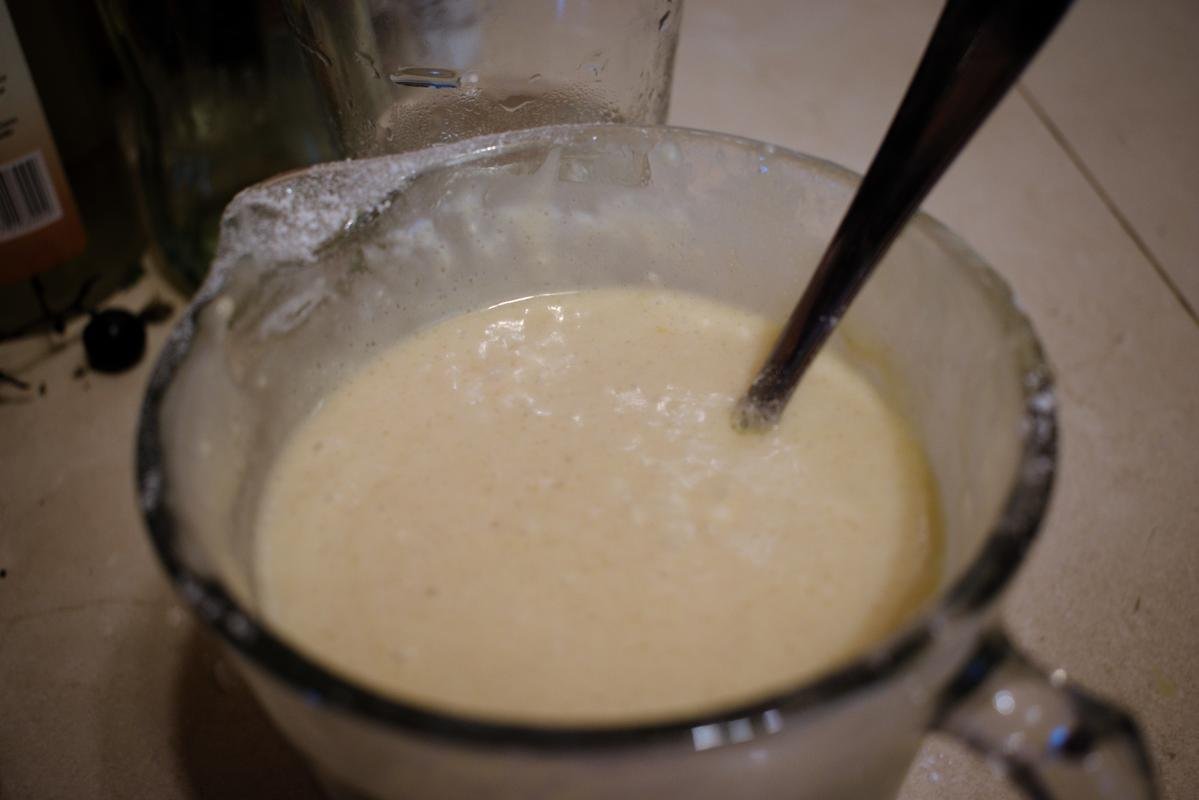
Milk!
Some claim the best pancake is a buttermilk pancake. If that’s true I’m stuck improvising as that’s not really a product that exists here I’ve found. Before I just used regular almond milk but recently I’ve found that adding about a teaspoon of apple cider vinegar to about ¾ cup almond milk makes for a good substitute. I’ve learned the buttermilk is actually important because it adds acid as well as flavor which reacts with the baking soda in baking powder making for a fluffier pancake. Ratio of milk for me changes based on things like flour and humidity. You want a batter that is thick, but not cookie dough thick.
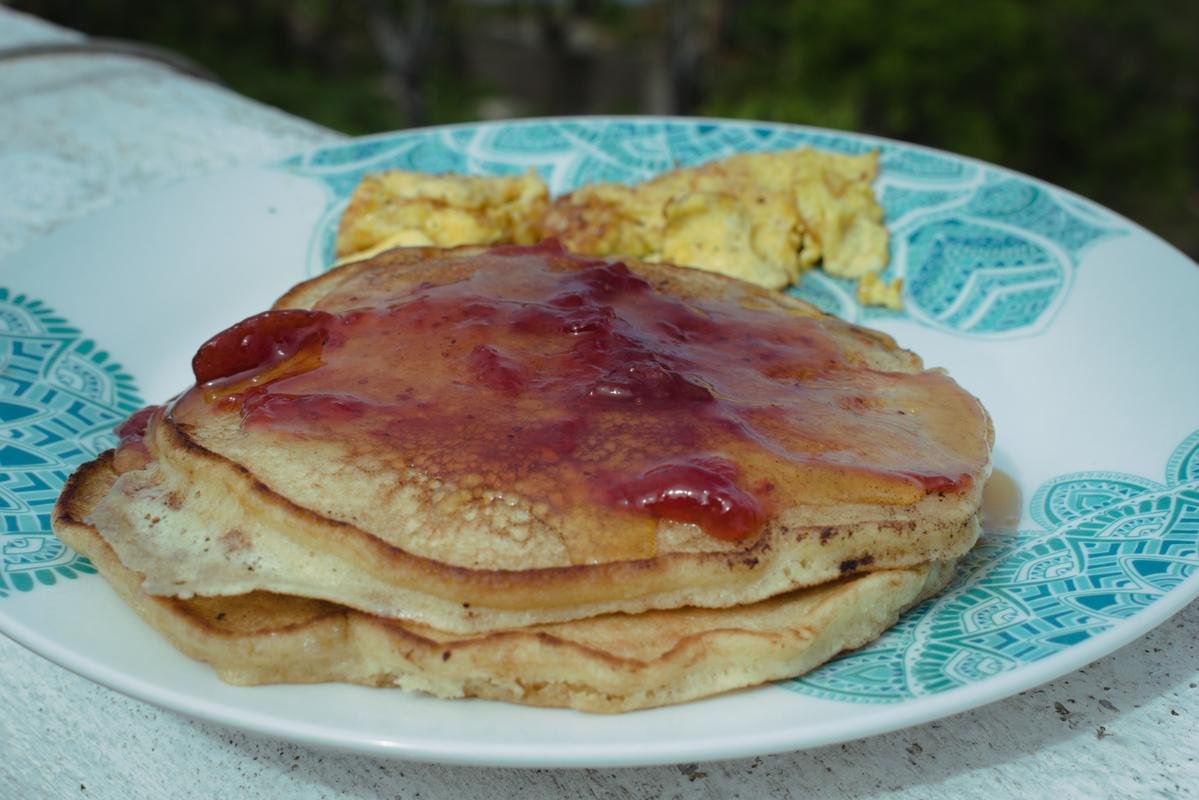
Make it Fluffy!
Baking powder, at least a tablespoon of it per cup of flour is absolutely essential for a fluffy pancake. In thicker heavier gluten free mixes I add more to help keep them light instead of dense. I have the issue where my baking powder cakes together within a few days of opening but I know from experience that sifting it into flour to break up the bits is a perfect solution as it works just as well as it did before it got moistened. I cannot avoid the caking issue here, but at least I can still use the powder once it’s caked.
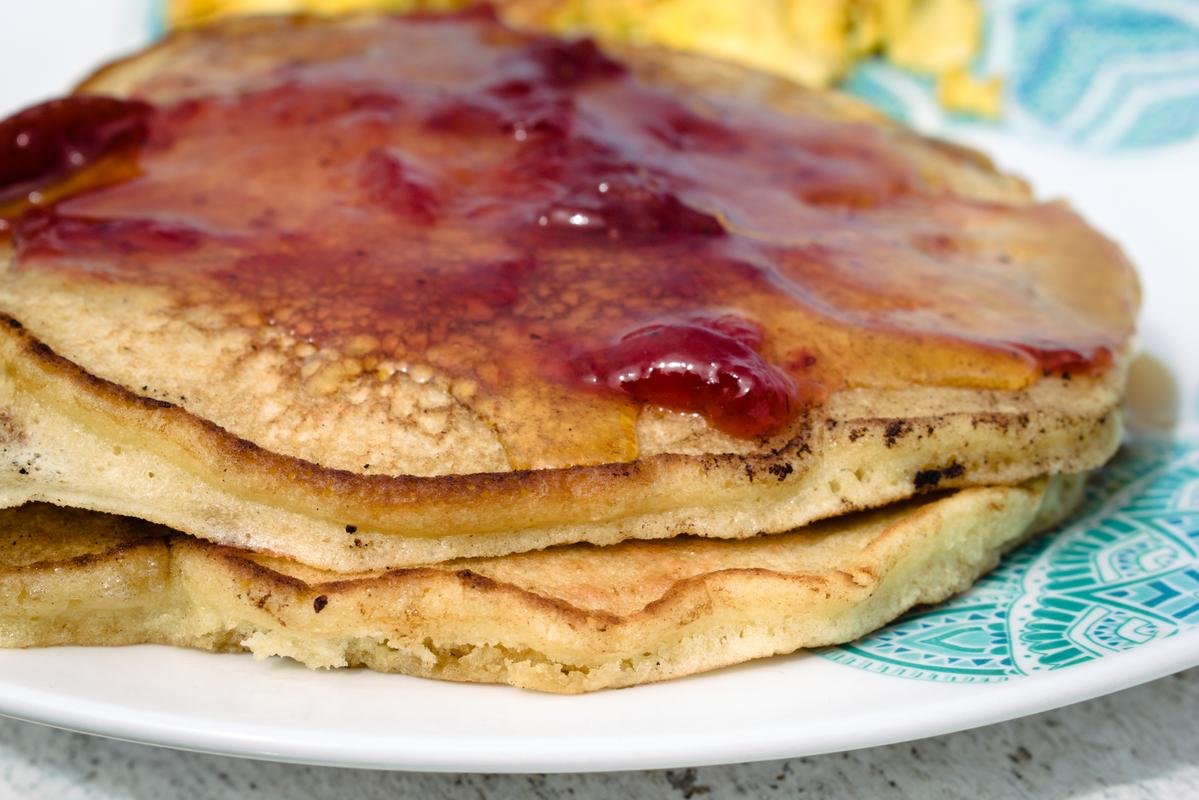
Eggs! Or not!
So obviously as vegans make pancakes all the time there’s nothing saying you need eggs in a recipe but for the most part, especially in a gluten free mix, eggs are best. I generally only use one to a cup of flour unless it’s gluten free and a heavier flour, then I’ll use two. I’ve used mashed bananas in the past which yielded a dense but tasty option and I’ve gone without eggs at all both on purpose and on accident, neither of which I would suggest. If you happen to only find yourself with tiny eggs, use three of them for every egg you need.
Sugar
The most variable part of the recipe in some ways is the sugar. I start with a base of a quarter cup to one cup flour as a base, but I’ve been known to go less or more depending on the application. I’ve also been known to switch out for honey or maple syrup, adjusting milk levels by reducing them to compensate for the texture of the syrup.
Fat!
I like butter, and that’s where I’ll leave it. I add two tablespoons of oil, be it butter or avocado oil to the batter directly and I use it while cooking to keep the pan well oiled during the cooking process.
The Process
Mix it up in a measuring cup, or larger bowl if you’re making more. Heat a pan to medium low and oil it with butter or whatever you prefer. \

Add some batter depending on the size and shape. Cook it on low until it looks like the photo above, then flip to the other side.
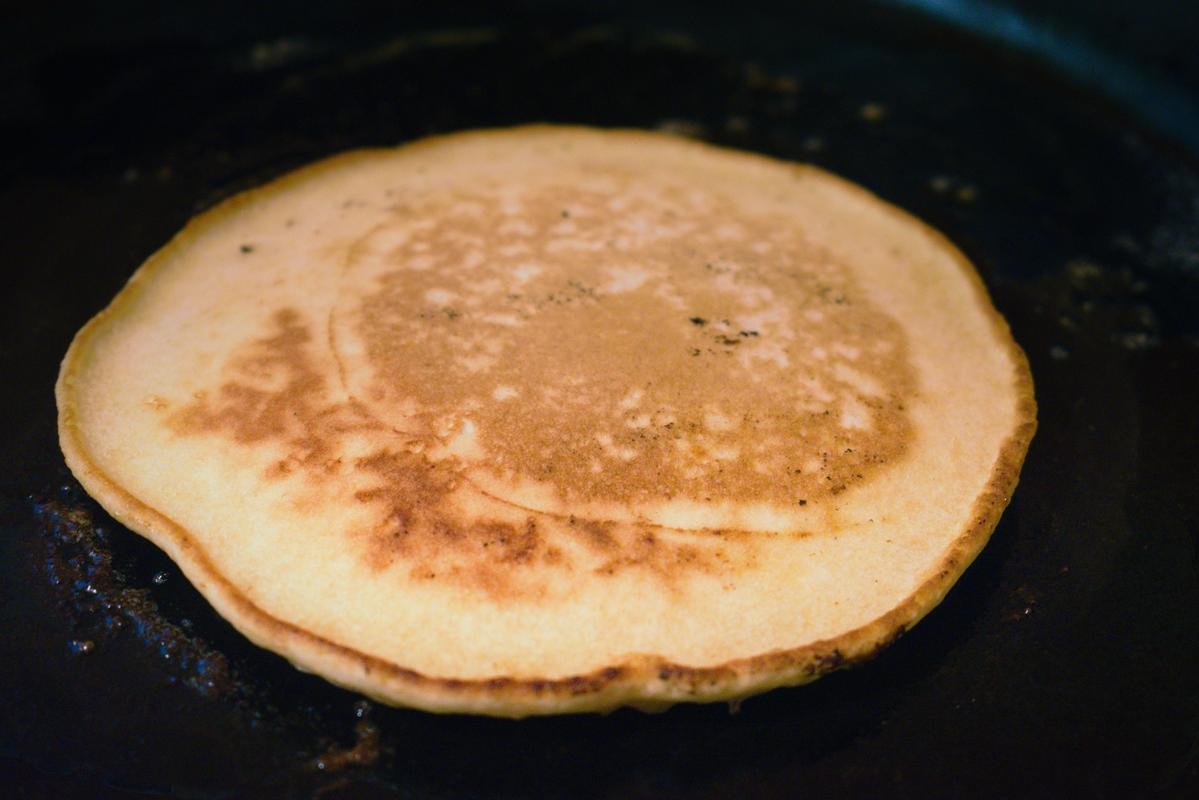
I generally butter them when hot after coming off the pan, then follow with fruit, jam or maple syrup. Lately I’ve experimented with things like bacon and sausage in the pancakes which has provided varying results. I’ve always started with the parameters I’ve shared to get generally tasty results, even if they occasionally look terrible.
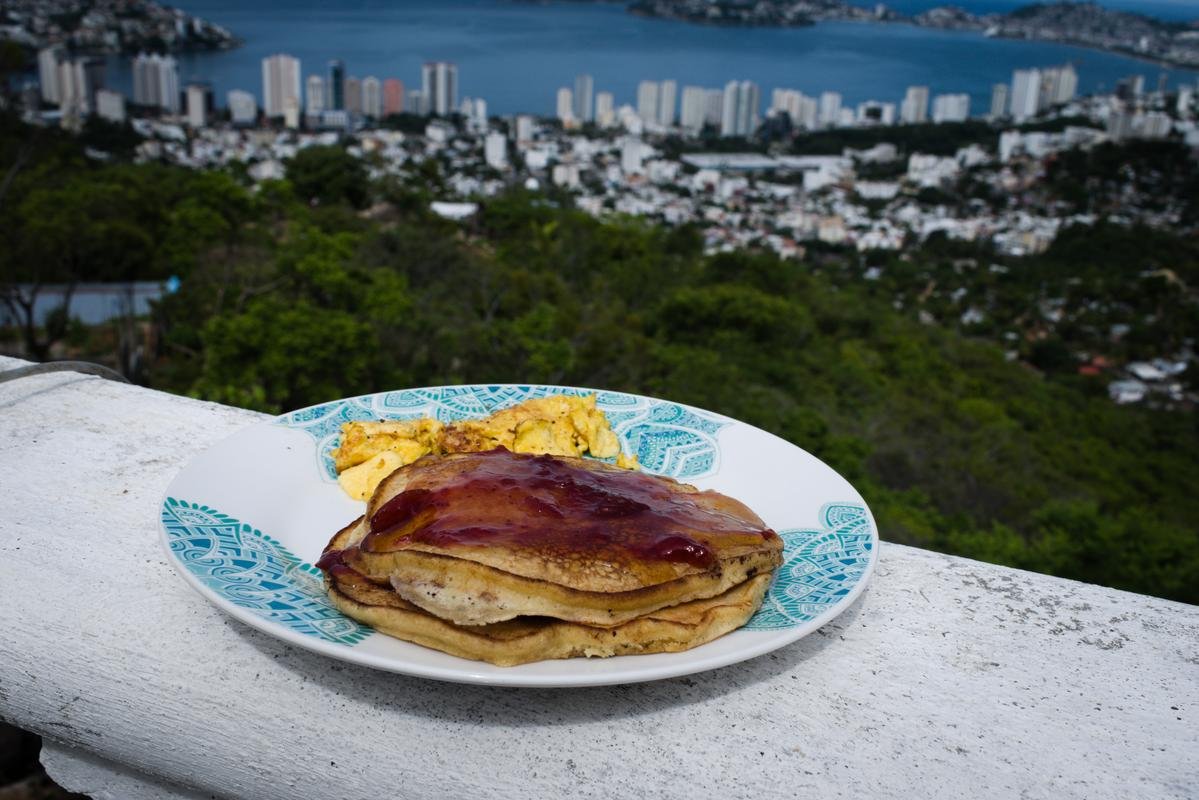

Check out the links below for more like this one!
Bacon Surprise Mini Pancake
Adventures into Mexican Markets: Super Naturisa Health Food Stores
Natural Health: 5 Elements Super Nutrient Bee Product Blend

In case you missed them, some of my recent posts:
Farm Update: White Silkie "Cracker" is Nearly Recovered and Sassy!
Acapulco Adventures: Ghetto Bus Trip
Farm Update: Hen Nearly Dead With Vent Gleet Returned to Rooster Husband Healthy Today


Hi there, if you're new to my blog here on Steemit check out this for more information on who we are and how we got here.


